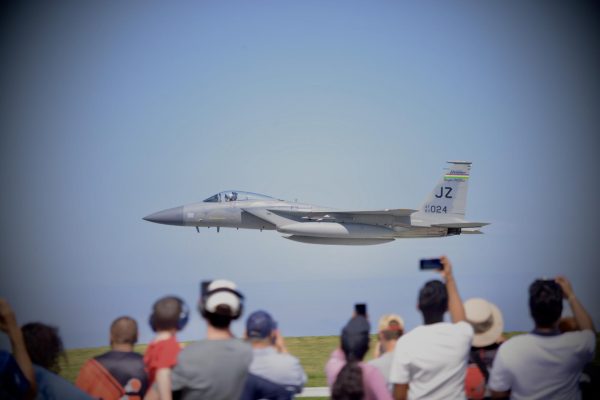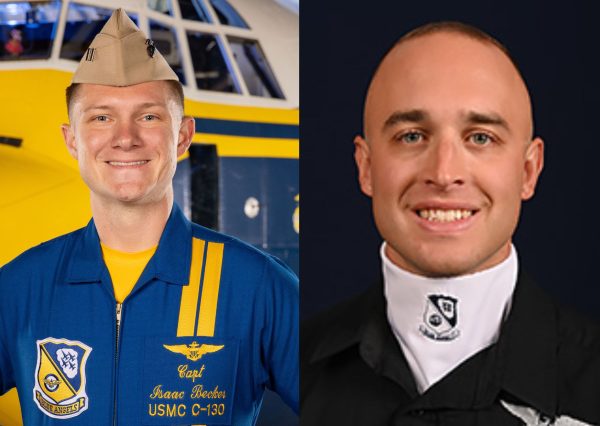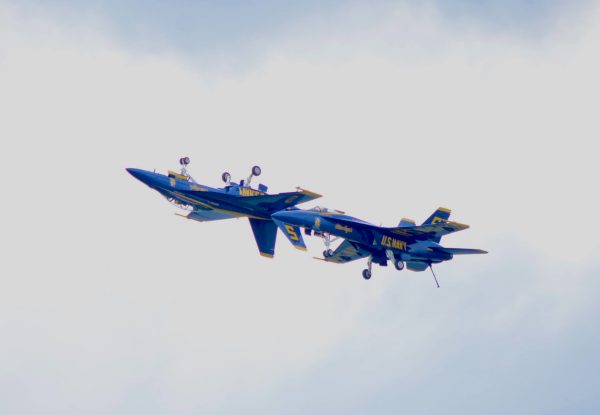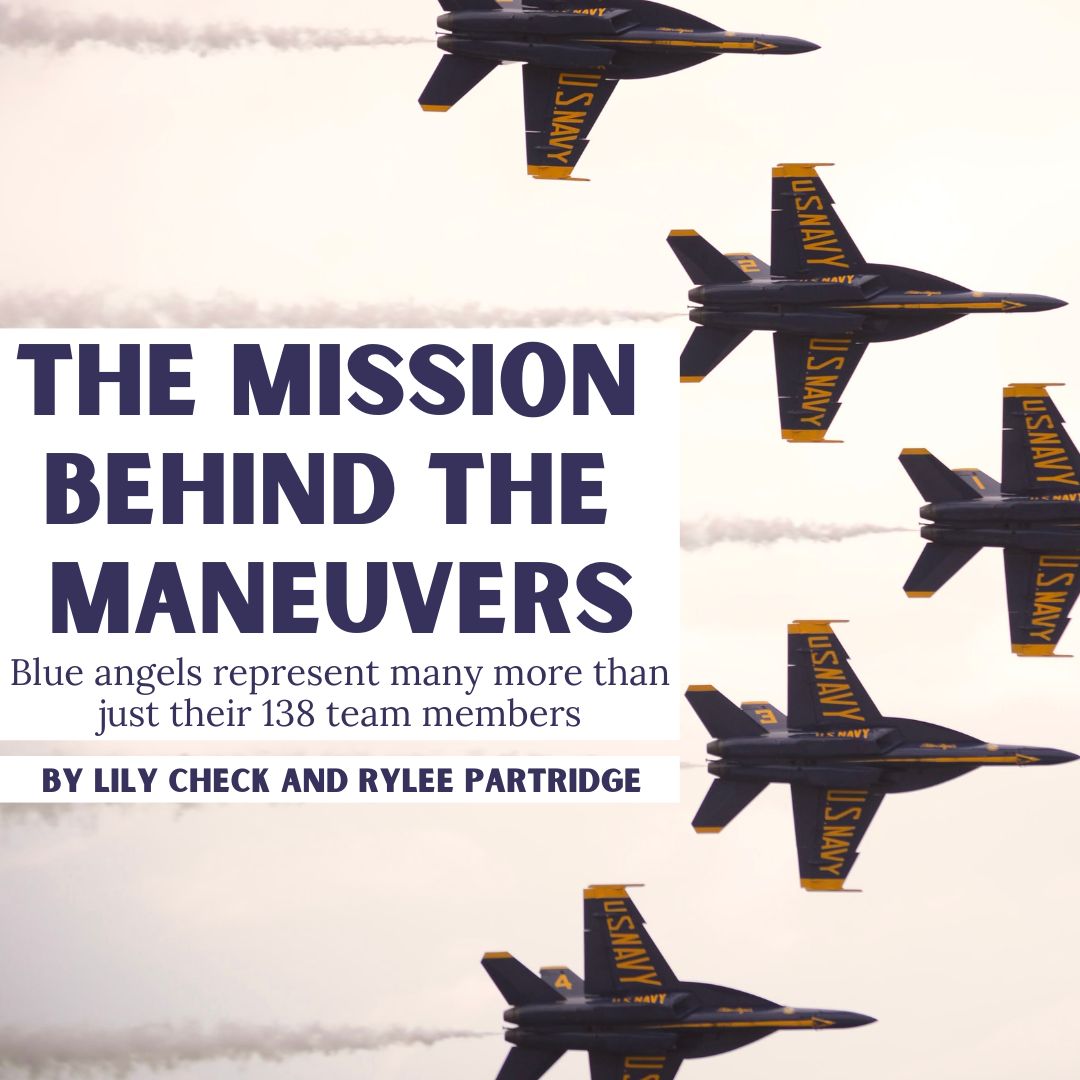The audience is left in awe as the jets fly by at an impressive speed of 700 miles per hour. The bleachers continue to vibrate from the frequency of the aircraft, rattling the planes and the hangars in which they are contained. The children make their way to the fence hoping to catch a glimpse of the pilots as the show concludes; however, what they may not know is that the Blue Angels are not just a show. They are a lifestyle.
Established in 1946 by the United States Navy, the Blue Angels comprises 17 pilots who perform flight demonstrations across the country. Traveling as far west as Miramar, California, and as far east as Virginia Beach, Virginia, being an Angel is not for the faint of heart, but many members argue that it can prove to be rewarding.

“The schedule on the team is tough,” said Captain Isaac Becker, one of the three pilots of “Fat Albert” (a cargo plane that carries the Blue Angels’ maintenance and support equipment). “We spend around 300 days out of the year away from home in four or five-day stints. It is rigorous, but we have the opportunity to meet new people.”
Like Becker, Airframes and Maintenance Supervisor Nick Kaminski admits that the team’s routine never becomes dull. A native of Mount Airy, MD, and graduate of the Naval Air Technical Training Center (NATTC), he explains that since he joined the team in 2022, his feelings surrounding the Angels’ performances have remained the same.
“Seeing ‘Fat Albert’ and the planes flying, it still excites me every day,” said Kaminski. “[The demonstrations] are tremendously fun to watch.”

“We visit hospitals, schools, and community functions to share benefits of military service and aviation,” said Becker. “It is honestly one of my favorite parts of the job; we love coming to talk to students about what we do.”
Well, it turns out that the students love it just as much as they do. Many who attended the September 20th assembly run by Becker and Kaminski say they enjoyed listening to the two explain their backgrounds and what they do on a daily basis.
“My favorite part of the assembly was when Becker demonstrated the process of becoming a Blue Angel and how they [perform] the air show,” said sophomore Miles Edwards. “They have to assemble a new team of people each year. [Being a Blue Angel] is much harder than it sounds.”
Although Becker explains that the turnover of personnel occurs quite abruptly after the air show season ends, the team does everything it can to “bring back the team’s cohesiveness” through the use of open communication.
“We turn over 30-50% of our personnel,” said Becker. “Everything changes, which is why communication is paramount. It is very easy to under-communicate, but difficult to over-communicate. If you are on a team where communication is paramount, it is very important to over-communicate.”
Becker and Kaminiski also emphasize the importance of excellence within the team. After their initial performance, each member heads off-site to review their footage and identify areas of improvement.

“After we sign autographs and take photos, we disappear for two hours to debrief,” said Kaminski. “We strive for perfection in everything we do.”
While the Blue Angels already made a stop at NAS Oceana this September, they will be in town next fall from September 24-25. Mark your calendars to see these dedicated pilots; they will definitely not disappoint.








